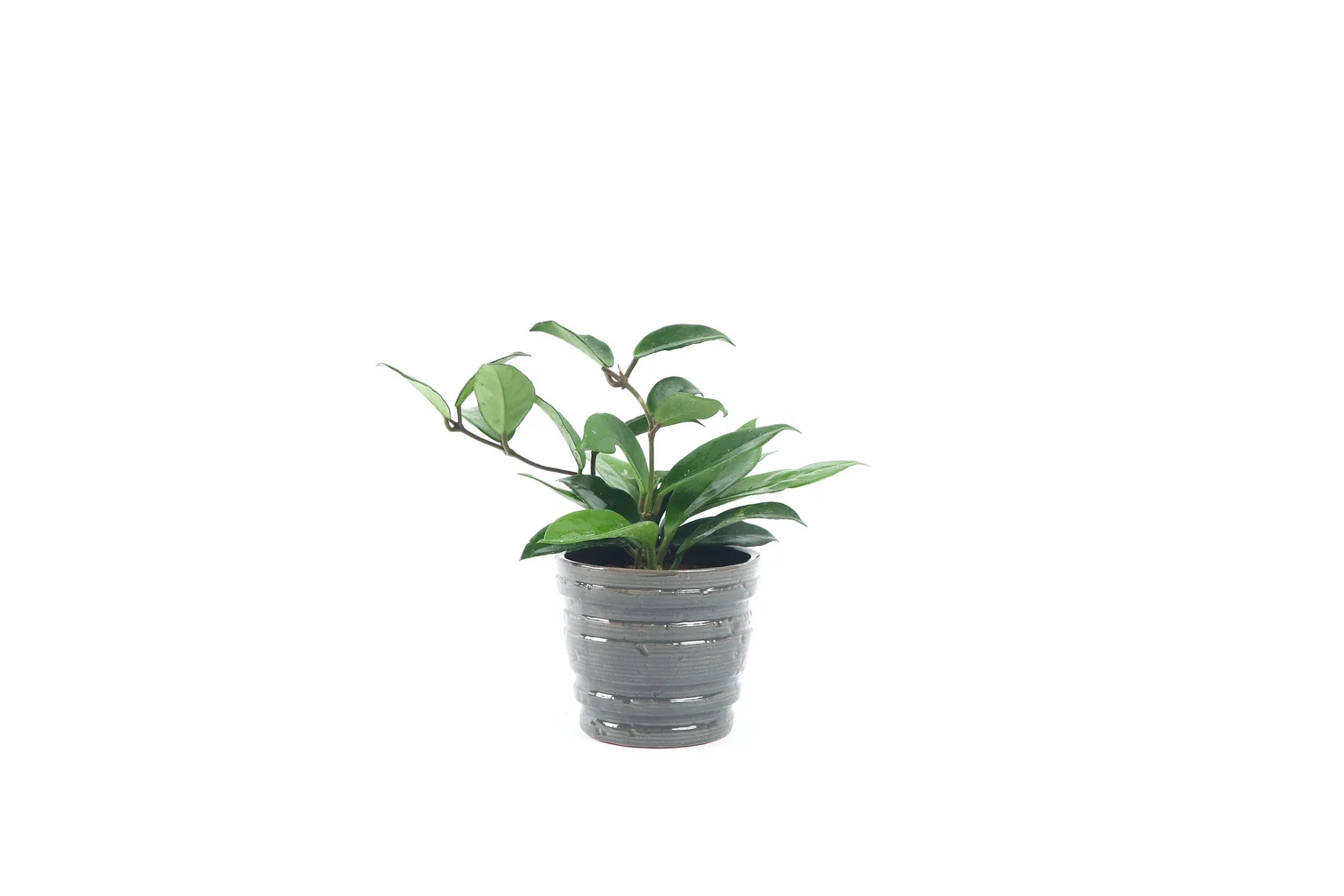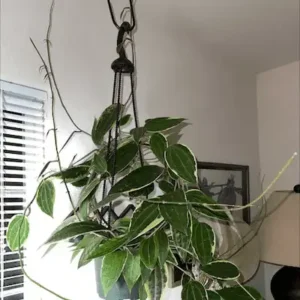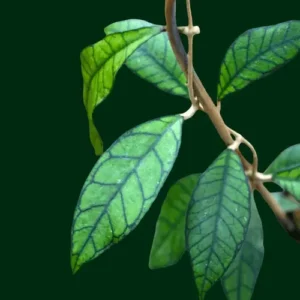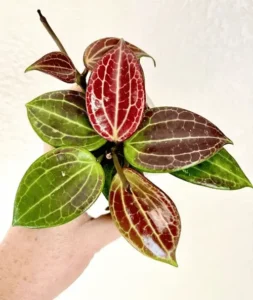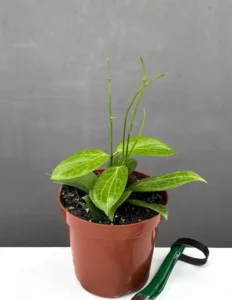Description
Hoya pubicalyx is a captivating species among the genus of Hoya. It is widely appreciated for its stunning flowers and decorative foliage. It is native to the Philippines and is sometimes confused as a hoya carnosa. This wax plant is an epiphytic herbaceous perennial in the dogbane family (Apocynaceae). It is also called a succulent vine. Its dark green leaves are subtly mottled with grayish, silvery specks that look quite beautiful.
Properties
Scientific name: hoya pubicalyx
Common name: pink silver, porcelain flower, silver pink vine
Light requirements: bright, indirect light
Temperature requirements: 60°F and 85°F(16°C – 29°C)
Propagation: by stem cuttings
Facts
-It grows in a tropical rainforest.
-It is also kept as a houseplant in a temperature climate and can be found in variegated forms in nurseries.
-This species has the most attractive silver-flecked leaves and aromatic showy flowers that make a garden full of beauty and adversity.
Benefits
Low maintenance plant
-It is a low-maintenance plant. It is a natural air purifier and plays the role of a workhouse for your lungs.
Beautiful foliage
-It foliage in a beautiful way as it adds silver to your greenery. It has different growing options, so you can adapt it to space and style easily. It is a plant with low light tolerance, beneficial for only low sunny apartments.
Easy to care for and propagate
-It is easy to care for and propagate. It is a symbol of love, luck, and perseverance. It is considered a storyteller plant.
Common problems with hoya pubicalyx
Hoya plants, often called wax plants, are loved for their striking foliage and sweet-smelling flowers. Though generally easy to care for, they can encounter a few typical issues that may hinder their growth. Overwatering, lack of sufficient light, and pest problems are some of the most frequent challenges. Root rot, leaf yellowing, and insect infestations like mealybugs can all arise if the plant’s needs aren’t properly met. Recognizing these common problems and knowing how to resolve them is key to ensuring your hoya pubicalyx stays vibrant and healthy. Here is a list of common problems related to hoya pubicalyx.
Detailed analysis of these common problems
Here is a detailed analysis of these common problems.
Dark spots
Dark spots on the leaves are fungal infections caused by overwatering might be caused by temperature fluctuation. The plant was harmed by these dark patches as they progressively formed.
Aphids, spider mites, and mealybugs
-The hoya plant is harmed by mealybugs, spider mites, and aphids. Root rot may result from the container holding too much water if the plant is not kept root-bound. Additionally, overwatering may prevent the plant from flowering.
-Thinning, brown, or wrinkled leaves can mean that the plant is allowed to dry too much between watering.
Mold and fungus
-Mold and fungus which are the silent invaders discoloration or powdery spots on leaves are also common problems. It is also susceptible to a range of common ‘sap-sucking’ houseplant pests including aphids, mealybugs, scale and spider mites.
-Hoya fungal leaf spot and other fungal or bacterial diseases commonly affect this type of plant which is caused by brown spots on the leaves.
Root rot
Root rot is a common disease caused by overwatering and poor drainage.
Yellow or wrinkled leaves
Leaves turning yellow due to overwatering and lack of light.
Wilted, wrinkled, or shriveled leaves
Wilted, wrinkled, or shriveled leaves are frequently signs of a serious water deficit. Water your plant adequately to ensure healthier development in the future.
Other common problems
-Yellowing, leaf spots, excess water on top leaves, sooty mold (develops on the leaves’ sugary, sappy leftovers), light and temperature angles, scale insects, pests, and root rot which are the silent killers and occur when the soil is too moist.
-Among the insects drawn to these species are whiteflies. Root rot and leaf drop can result from overwatering. These are all the common “sap-sucking” insects in the garden.
-Caterpillars, spider mites, leafhoppers, yellow edges, dark blotches, leaf beetles, mealybugs, thrips, and aphids are also common problems.
Solutions
Although hoya plants are relatively low-maintenance houseplants, they can suffer from a number of common issues, including pests, overwatering, underwatering, and low humidity. Many problems can be avoided by closely monitoring their environment and care requirements. Recognize issues early on and make changes to restore your hoya’s health. Hoya pubicalyx creates lovely, blooming houseplants when given the proper care.
Detailed Analysis of solutions
Here are some general solutions to care for hoya pubicalyx. A detailed analysis of the solutions are described in the below section for the better growth of your hoya in the future. These solutions have a great benefits for those who are hoya plant lovers.
Choose the suitable pot
-Firstly, choose the right pot which is very important, regular plastic containers are best. Choose a manageable pot according to the hoya size.
-Secondly , choose the material that draws moisture from the soil as hoyas are badly affected by overwatering and root rot.
Leaf spots, dark spots, and root rot
Solutions
-To prevent leaf spot infections, avoid overwatering and ensure the hoya has good air circulation, keep leaves as dry as possible. Maintain proper pruning of your shrubs and trees to allow for adequate canopy ventilation.
-In case of dark spots apply cinnamon and other fungicide, minimize watering and let your plant to grow. For better growth, longer watering intervals are a must for these beautiful houseplants.
-Make sure the soil drains well and the plant isn’t overwatered to avoid root rot.
Wrinkling, yellowing, and falling off leaves
Solutions
-To prevent yellowing, wrinkling, or dropping off leaves and scale insects, isolate the plant and spray it with fresh water and rubbing alcohol.
-To avoid yellowing or wrinkled leaves, the best way is to water the plant moderately.
-Provide enough humidity and light to your houseplant for enough growth.
-Indirect sunlight is very beneficial for the hoya plants blooming.
-If you place the hoya pubicalyx in a place where direct bright sunlight comes, leaves will automatically turn yellow.
-To avoid all the above issues, replace the soil with fresh and clean soil. Once you have thoroughly cleaned the plant, it will automatically grow better.
Mold and fungus diseases
Solutions
-To prevent mold and fungs cover and scrub the affected area with bleach, a fungicide, a detergent, or water and then dry it.
-Before remodeling, remove any residue from the cleaning chemical mixture and thoroughly dry the surface of the room where the houseplant is kept.
-Use air conditioners and dehumidifiers to lower the amount of moisture in the air. Keep the humidity inside your home at or below 60%. Insulate cold surfaces including windows, floors, and outside walls to lessen condensation.
-Dry damp areas in a day or two to prevent the growth of mold.
Aphids, mealybugs and spider mites
Solutions
-Use neem oil, check plants frequently, keep leaves clean, apply rubbing alcohol, steer clear of overwatering, and introduce natural predators to ward off aphids, mealybugs, and spider mites.
-Aphid infestations can be avoided by maintaining target plants well-watered, fertilized, and healthy, as well as by eliminating host weeds and neglected, stressed plants. Aphid infestations originate locally, aphids can be sprayed with organic garlic and chili sprays, squished with fingers and thumb, or eliminated from plants with a water jet.
-Most “soft” insecticides and biological agents, which are easily accessible to home gardeners, can be used to control mealybugs.
–Leptomastix dactylopii and Anagyrus fusciventris are two parasitic wasps that can be released into an affected area to suppress mealybug populations effectively.
Propagation Method
Generally, hoya plants are propagated by stem cuttings but it is also possible to propagate them from leaves. It depends upon the hoya plant variety to which species that certain hoya belongs as hoya carnosa is usually propagated by seeds, by stem cutting, and by layering. Hoya kerrii is commonly propagated by stem cutting, leaf-cutting, or some other methods like by ziplock method, Sphagnum Moss, and Passive Hydroponics with Perlite. And, some other hoya varieties like hoya pubicalyx are propagated by stem cuttings.
Propagation by stem-cutting
Step 1
Make sure you take your cuttings from softwood. Always take cuttings at an angle using clean, sharp pruners used a popsicle-making container (fancy propagation equipment!) for the rooting because it held the leaves up above the rim.
Step 2
Keep water in the container just above the bottom node and when the roots appear, make sure they’re covered too and remove all leaves, those at the top of shorter stem cuttings (no more than 1, 2, or 3 nodes) while rooting in a mixture.
Hoya plant propagated by stem cuttings
Hoya pubicalyx is propagated by stem cuttings.
FAQs Is Hoya Pubicalyx easy to care for? Hoya pubicalyx is easy to care for and propagate. It is a symbol of love, luck, and perseverance. It is considered a storyteller plant. Is Hoya Pubicalyx hanging or climbing? Hoya pubicalyx is a succulent vine which is also called a climbing plant. Its dark green leaves are subtly mottled with grayish, silvery specks that look quite beautiful. This species has the most attractive silver-flecked leaves and aromatic showy flowers that make a garden full of beauty and adversity. How do I get my Hoya publicalyx to bloom? Choose a manageable pot according to the hoya size. Choose the material that draws moisture from the soil as hoyas are badly affected by overwatering and root rot. Provide enough humidity and light to your houseplant for enough growth. Indirect sunlight is very beneficial for the hoya plants blooming. If you place the hoya pubicalyx in a place where direct bright sunlight comes, the leaves will automatically turn yellow. |
Conclusion
In conclusion, hoya pubicalyx is a truly captivating plant, celebrated for its graceful vines, speckled foliage, and exquisite clusters of fragrant, star-shaped blooms. Its leaves, which can transform into shades of pink or deep purple under ideal conditions, add a dynamic beauty to any space. Easy to care for and resilient, this species thrives with minimal attention, making it a favorite among plant lovers. Whether cascading from a hanging basket or climbing a trellis, Hoya pubicalyx brings an enchanting elegance to any collection, rewarding its caretakers with both its stunning appearance and sweetly scented flowers.

